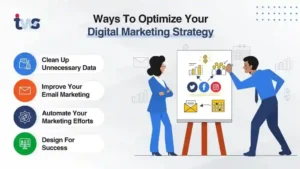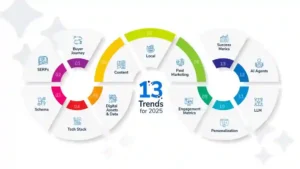How to Use Remarketing to Reconnect with Potential Customers

Alright, folks. Picture this: you’ve got people visiting your site, checking out your stuff, maybe even adding items to their cart… but then—poof—they’re gone. It’s like that one person who reads your text but doesn’t respond. Ugh. But hey, that’s where remarketing swoops in like a caped crusader, ready to remind those potential customers you exist and (hopefully) drag them back into the fold.
Let’s get into how to use remarketing to reconnect with potential customers—because why let them slip away when you can keep waving your flag in front of them?
So, What Exactly is Remarketing?
Here’s the deal. Remarketing is like sending a text to that friend who ghosted you after you bought them coffee. You’re not that desperate, but hey, you want another shot. Essentially, remarketing involves targeting users who’ve interacted with your brand—maybe they browsed a product or added it to their cart—and showing them ads on other websites. That little tracking pixel you’ve got on your site? Yeah, it’s like the digital equivalent of following someone around the store, but in a not-creepy way. Trust me, it works.
The power here is that you’re reconnecting with people who’ve already expressed some kind of interest. They’re not strangers! They’ve been to your website. They know you exist. Now it’s your job to remind them why they should come back.
Why Should You Even Bother with Remarketing?
So, here’s why you should care: remarketing isn’t just some gimmick. It’s a legit way to boost conversions and get people back in your digital door.
First, let’s talk benefits:
- Higher Conversion Rates: Let’s be real—if someone already looked at your stuff, they’re way more likely to buy than a total stranger who’s just casually browsing. The stats back me up, but you don’t need numbers to understand that logic.
- Cheap but Effective: Compared to launching an entirely new campaign targeting cold leads, remarketing is pretty cost-effective. It’s like a second date with a person you kind of know. Less risk, more reward.
- Improved ROI: By targeting people who are already somewhat familiar with your brand, your chances of making a sale skyrocket. It’s like fishing with a net, not a single line. Catch more fish with less effort.
- Brand Recall: Even if they don’t buy right away, seeing your ads again keeps you in their minds. Plus, let’s face it, sometimes all people need is a gentle nudge—like, “Hey, remember us?”
Alright, now that we’ve established why remarketing is cool, let’s get down to how to actually make it work for you.
How to Actually Use Remarketing to Reconnect with Potential Customers
Remarketing is a little bit like dating—there are rules, but there’s also a ton of room for finesse. So let’s break it down.
1. Segment Your Audience Based on Behavior
Not all visitors to your website are the same. I’m not saying they’re all unique snowflakes, but let’s face it—they act differently. Some visitors are window shoppers, some put things in their carts but ghost you at checkout, and others might spend hours reading your blog posts without actually buying anything. So, the key is to target them based on their behavior.
- Cart Abandoners: If someone added something to their cart but didn’t check out, throw an ad in their face (okay, not literally). You can offer them a discount or a freebie to reel them back in. Works like a charm.
- Browsers: If someone’s checked out your products or services but didn’t make a move, serve them ads with those same products. You know, a little “Hey, you looked at this. Still interested?” nudge.
- Past Buyers: Don’t just stop with the first sale. Reconnect with people who’ve bought from you before—maybe offer them something complementary. I swear, nothing makes me feel special like a “Hey, you bought X, how about Y?” message.
2. Dynamic Remarketing: The Holy Grail
This one’s a bit more advanced, but trust me, it’s worth it. Dynamic remarketing lets you show people the exact products they were eyeing, in real-time. I mean, imagine you’re showing them the shoes they loved, but now with a discount code. You can’t tell me that doesn’t make them feel some type of way.
But seriously, dynamic ads let you show specific items based on what they viewed, which just feels personal. And personal is what drives conversions. In my experience, people like being reminded of exactly what they wanted, instead of just being thrown random products they might not care about.
3. Don’t Overdo It
Listen, I get it—you’re excited. But too many ads can lead to fatigue. You don’t want to annoy your audience. You ever get an email from a store that’s practically begging you to buy something every day? Yeah, it gets old fast. You want to avoid that.
Set a frequency cap. This means you limit how often a person sees your ad in a given time frame. Maybe 3 times a week max. Trust me, you don’t want to become that person who’s everywhere—like that one guy who keeps showing up at every single party.
4. Cross-Platform Remarketing
I learned the hard way that if you’re only running remarketing ads on Google Display Network, you’re missing out. People aren’t just hanging out on one platform anymore. They’re on Facebook, Instagram, YouTube, TikTok… you name it.
So, cross-platform remarketing is key. If someone visited your site on desktop, they might not be spending time on the same platform when they’re on mobile. So make sure your ads follow them across devices, because, you know, people don’t stop shopping when they leave their computer.
5. Tailor Your Ads for Specific Audiences
One of the biggest mistakes I see with remarketing is generic ads. It’s like sending your grandma a birthday card that says “Happy Birthday!” with no personal touch. Sure, it’s better than nothing, but where’s the fun in that?
So, take the time to make your ads feel personal. If they abandoned a cart, remind them of what they left behind. If they browsed a blog post, offer them related content or products. It’s all about showing that you’re paying attention to their behavior and preferences.
6. Timing Is Everything
I once chased after someone so aggressively after they left my site that they probably filed a restraining order against me. That’s what happens when you show someone an ad too soon. On the flip side, if you wait too long, they may have completely forgotten about you.
The trick is timing. If it’s been a day or two since they visited your site, hit them with an ad then. But if it’s been a week, maybe spice things up with a new offer. A fresh perspective goes a long way.
7. Keep Testing and Optimizing
Alright, this one’s obvious, but you’d be surprised how many businesses set it and forget it. It’s like planting a tree and never watering it again. No growth. No fruit.
You’ve got to test different messages, visuals, and even platforms. Run A/B tests and see which ads perform the best. Adjust based on what the data tells you. And if something’s not working? Dump it.
Mistakes to Avoid in Remarketing
Before you dive in, let’s chat about some classic mistakes to avoid. You know, like getting excited about a first date and showing up in a tux when it’s just casual Friday.
- Targeting the Wrong People: If you’re throwing ads at anyone who visits your site, you’re casting too wide of a net. Not everyone’s ready to buy—focus on people who’ve shown more interest.
- Not Optimizing for Mobile: Everyone’s on their phone, y’all. If your ads don’t look good on mobile, you’re missing out.
- Not Tracking Results: If you don’t measure performance, you’re basically flying blind. Watch your KPIs and optimize based on the data.
Wrapping It Up
Look, remarketing isn’t some magical solution, but it’s close. It’s about staying relevant, staying visible, and reminding your audience that you’re there to help. The next time someone abandons their cart or leaves your site without converting, don’t panic. Get that remarketing plan in place and get ‘em back in your digital store. Your sales will thank you.







